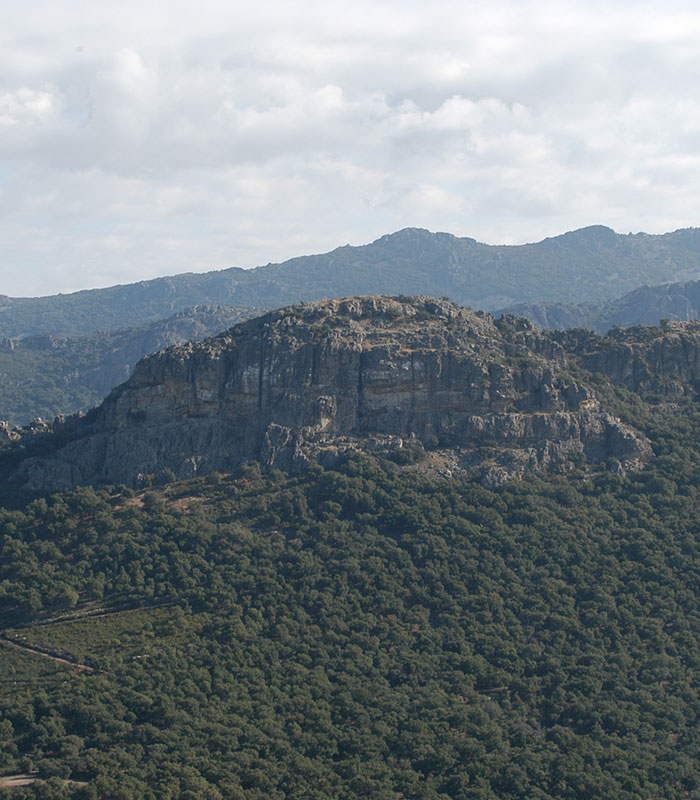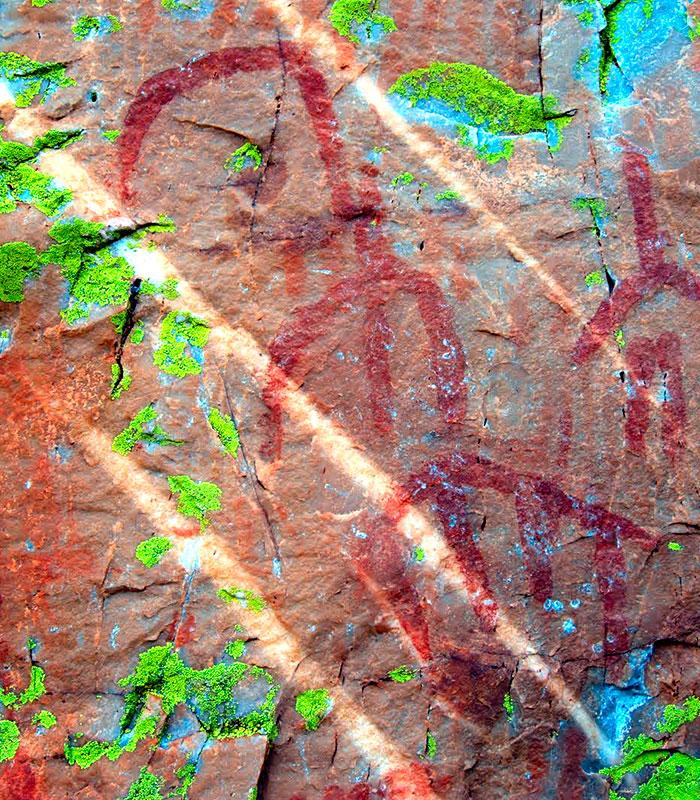Since ancient times this crag has been known locally as the Cancho del Reloj (Clock Rock) as it is the first to be lit up by the sun’s rays every day. Like a clock it announces the beginning of each new day. It is one of the geosites of the Villuercas-Ibores-Jara Global Geopark of the UNESCO and here there is an ensemble of cave paintings which is considered to be one of the finest in the Geopark. Popular tradition christened the site where they are located as ‘The sign’.
In the Sierra del Castillejo (the name refers to the remains of the Arab castle on its summit) stands the Cancho del Reloj, an impressive quartzite cliff. It is surrounded by abundant vegetation consisting of oaks, cork oaks, and scrubland and is located between the syncline of Santa Lucia and the Trujillo-Cáceres peneplain to the west.
The site has important strategic connotations as it has a wide field of vision and affords control over the routes of the valley. This is reflected not only by the cave paintings but also by the existence of the aforementioned Arab fortress and a large settlement

